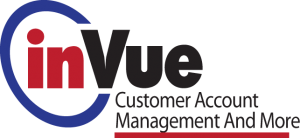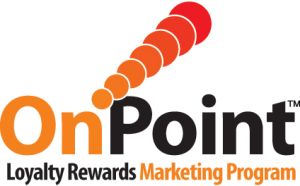Goldilocks Marketing
Posted: 09/16/24

Use your platform intelligence to get messaging that’s ‘just right’ at the ‘just right time’ to customers who are ‘just right’
When your marketing messages reach the wrong people, or the right people at the wrong time, it’s a waste of your money. The trick is to get “just right” marketing, being shown to the right people at the right time with the right message.
It’s not magic. It’s a matter of using data intelligently. In some situations, that may incorporate the artificial intelligence of Google®, Meta, or your programmatic platforms. But in many cases, the best data and intelligence come from your account management platform.
Data, By the Numbers
You have, most likely, heard of first-party data and third-party data (and yes, there is second-party data), but the definitions may not be clear:
First party data is information you have collected directly. Your customer lists already include a wealth of account details, such as their demographics, age of equipment, and home and family information. Even birthdays, anniversaries, and contract renewal dates! You know how often they need deliveries, the type of home, and any issues they are facing with their home comfort systems. You may also know if they are suffering some sort of financial hardship. This information – data – is in your account management system in some form or another.
Second party data is first party data that is shared. If you are involved in a trade association or community organization and they share the membership list with you, that’s second party data. If you share some of your customer data with a marketing partner, your first party data becomes the marketing partner’s second party data!
Third party data comprises everything else. It is purchased or used via an agreement with its aggregator. There have been many privacy protections put in place, especially over the past two or three years, to anonymize the data so that someone gathering the information sees a code rather than an individual’s phone number, home address or name. But even with the personal identifying information shielded as much as possible, all the data from internet service providers, search engines (like Google), social media sites, credit card applications, public records, colleges and trade schools, online purchases, interest, or engagement on anything digital … if someone keyed it in, clicked through or even hovered, shared, or liked … that data is floating somewhere, waiting to be accessed.
‘Just Right’ Targeting
This wealth of information about your customers and potential customers offers you a wide range of opportunities to get the right message to the right audience.
If you were considering promoting your price protection and budget plans, the first place to start is with your own customer base. These are the “low hanging fruit” for your value-added options. Your account management system and integrated customer portal should be able to identify customers who are not enrolled in these programs, and add display ads and banners on the customer-facing portal promoting the service with a few clicks from your dashboard.
When parsing your customer lists to identify targets, let the system filter customers in the ‘not enrolled’ segment further by looking at changes in customer behavior. By reviewing trends in payment histories, your platform can identify those customers who are regularly 30- or 60-days delinquent, make partial payments, or previously paid in full and on time but recently fell behind. These customers may not be aware of your budget amortization plans, but are likely to be open to the idea of the smaller monthly payments.
With some fine tuning and customization from your portal development team, emails and/or traditional print mail can be produced that include the customer’s estimated monthly payment and a link or QR code to enroll.
The email addresses and/or phone numbers of those customers can also be uploaded to your Google, Facebook/Instagram or programmatic platform and used to target external campaigns. Your company, your message, can now be displayed on the phones, connected TVs, apps, and websites these customers are using.
The digital platforms can expand your reach by utilizing their data on these users as well as their first- and third-party information to create look-alike audiences. These are consumers who are in the same segments or cohorts as your customers: location, age, income, home value, interests, family and/or parental status, mortgage status, credit card debt, etc. In other words, your ideal potential customer! Keyword and phrase targeting for searches such as “reduce my fuel bill” expands your reach even further.
‘Just Right’ Timing
The previous example showed how platform intelligence can help you find the right individuals to target for a specific, possibly time-limited, campaign. It can also help you identify timing for more generalized evergreen marketing, such as installations and upgrades or new business leads.
Again, for the installations and upgrades marketing campaigns, you would start with your first party data to identify customers with older systems, who used more fuel or needed more frequent deliveries in the previous year, or who had more out-of-service calls than the norm. While anyone falling into one of these segments is a potential sales opportunity, the accounts that fall within all three (older system, more fuel, more service) are most likely to be amenable to messaging about equipment upgrades, especially when combined with financing, rebate, or other options to reduce out-of-pocket costs. When your CRM is set up properly, it should be able to identify these anomalies, display appropriate automated messages on the portal, send automated emails or text messages with additional promotions and discounts, and alert your sales team.
These customers can be targeted through advertising platforms as well. Targeting for these types of new business campaigns should be a little broader, for individuals looking for “heating companies near me,” or “boiler (or furnace) repair service,” “new boiler (or furnace) costs,” and the like. These are consumers who are in-market and actively searching and researching the items and services you offer.
‘Just Right’ Messaging
Just as the timing and the audience need to be segmented for better results, your marketing campaigns should offer a selection of images and messaging. This is where the machine learning of platforms such as Google, Meta or your programmatic campaigns will do the heaviest lifting.
In the first days or weeks of your campaign, these platforms will “mix and match” the headlines, text, images, and calls-to-action you or your marketing provider developed, and determine which elements work best individually and in combination, and with which audience segments. One combination may resonate with women aged 30-45 on Google, but not on Facebook or Instagram. Another may have stronger responses from men from 45-70 across the board. The platforms’ AI systems do the A/B testing and wean out the weakest elements or combinations to steadily enhance your response rate.
Getting to your ‘just right’ marketing campaign requires a combination of skills, from integration of your CRM to creative development, ad placement, analysis, and campaign management. Your marketing partner should also be well versed in the advanced targeting options for Meta, Google, and programmatic platforms, to ensure you are providing ‘just right’ messaging to ‘just right’ individuals at the ‘just right’ moment in their busy lives.
Richard Rutigliano is President of PriMedia, Inc., an integrated marketing and communications firm specializing in the home energy sector. He can be reached at 516-222-2041 or rrutigliano@primediany.com.












